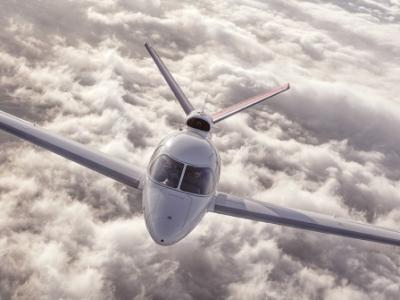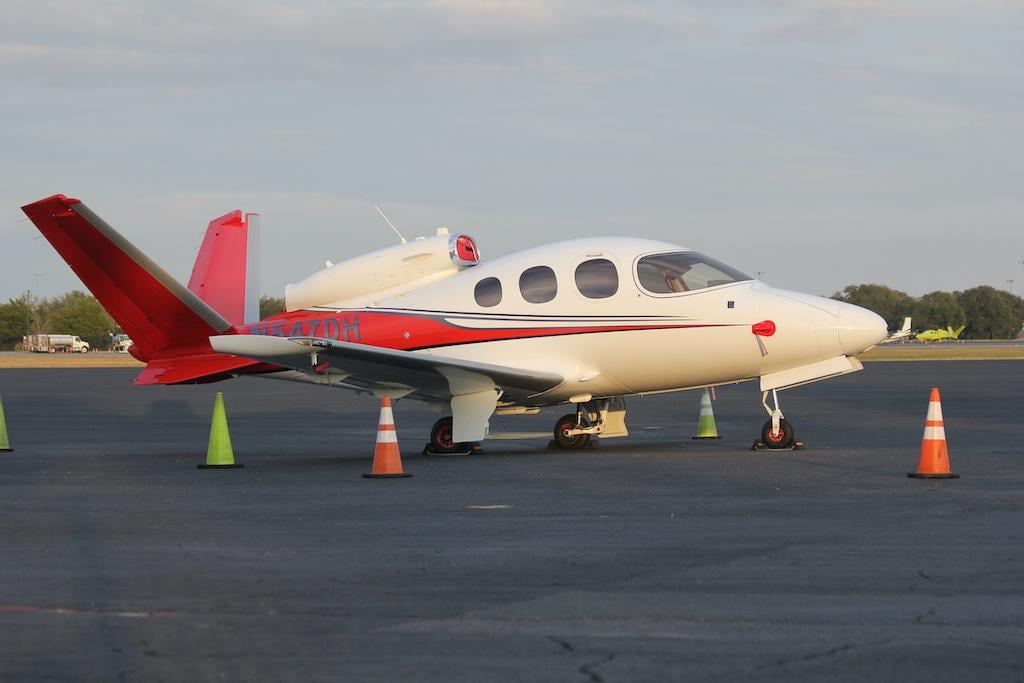
The distinctive, V-tailed Cirrus SF50 Vision Jet entered service in late 2016 as the world’s first certificated single-engine personal jet. Announced a decade earlier, its development was slowed by the economic downturn of 2008. Ultimately, Duluth, Minnesota-based Cirrus Aircraft brought the innovative jet to market with backing from China Aviation Industry General Aircraft Co., which acquired the U.S. company in 2011.
Though its debut was delayed, the SF50 was still a breakthrough for the industry. The National Aeronautic Association awarded the Vision Jet the prestigious Collier Trophy for 2017 as “the world’s first single-engine general aviation personal jet aircraft with a whole airframe parachute system.” Like its piston-engine SR20/22 siblings, the SF50 comes equipped with the Cirrus Airframe Parachute System (CAPS), a ballistic parachute recovery system that deploys from the jet’s nose instead of aft of the cabin for the piston models. In August 2020, the Vision Jet became the first jet and the third aircraft overall (after the Piper M600/SLS and Daher TBM 940 turboprops) certified by the FAA with the Garmin Autoland system, which Cirrus has branded as Safe Return.
The Personal Jet Market
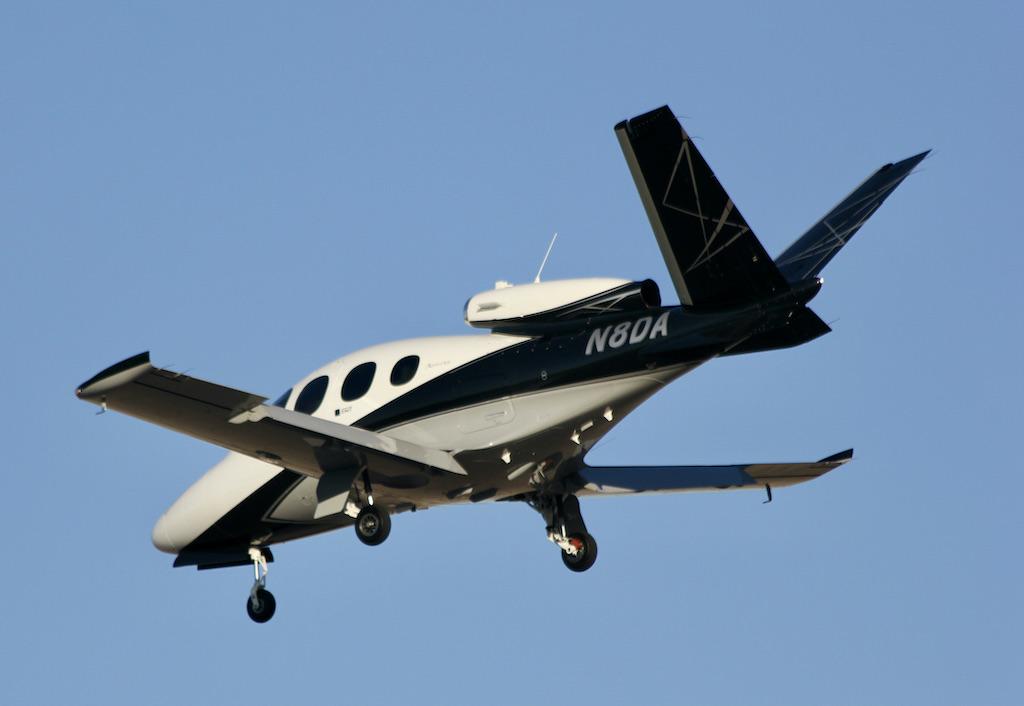
After delivering 86 Vision Jets in 2021, Cirrus declared the aircraft to be the best-selling jet in personal aviation for the third year in a row.
“Cirrus Aircraft has created an entirely new market with the introduction of the Vision Jet, a single-engine personal jet; therefore, it does not technically compete with other aircraft in the market,” said Cirrus Vision Jet Director Matt Bergwall and Sales Engineer Travis Wellik. “The Vision Jet fits between high-performance, single-engine piston aircraft like the SR series and the very-light-jet category. At Cirrus Aircraft, we aim to manufacture aircraft that serve specific missions and continue to deliver the Vision Jet to a targeted market.”
Powered by a top-mounted 1,846-lb.-thrust Williams International FJ33-5A engine, the seven-place Vision Jet flies to a range of 950 nm with the pilot, four passengers and NBAA IFR reserves. Maximum range is 1,275 nm and cruise speed is 311 KTAS, according to Cirrus. The jet requires 2,036 ft. of runway at MTOW (6,000 lb.).
Cirrus introduced the second-generation G2 Vision Jet in January 2019; it features an upgraded Perspective Touch+ by Garmin avionics suite, autothrottle and expanded flight envelope to 31,000 ft. The cabin is improved with new noise reduction features, two “artisan-crafted” second-row seats and new center console with stowaway tables.
The manufacturer announced the further improved G2+ model in October 2021. Included among the enhancements are performance modifications to the FJ33-5A turbofan that provide for a 20% improvement in takeoff performance at high density altitude, Gogo inflight Wi-Fi and new color options.
Price Appreciation

As of July, Cirrus had delivered 354 Vision Jets, including 266 G2 models, according to the Aviation Week Fleet Discovery Database. Sixty-eight percent of the jets are based in North America.
Vision Jets have appreciated in value after rolling off the production line. The 2021 factory-new list price of a Vision Jet was $2.85 million, according to the Aircraft Bluebook. The average retail price—the average price for a mid-time, average aircraft at the end of the previous quarter—was $3.2 million. “Currently, there are some models that are worth more than what the OEM list price for a new aircraft is,” says Chris Reynolds, Aircraft Bluebook valuations manager and aircraft appraiser. “This has happened in the aircraft world in the past and can be found occurring in several models currently in the Bluebook. Scarcity/supply and demand are the underlying culprits here, exacerbated by the events of the last year and a half.”
The Cirrus website in mid-July listed nine pre-owned Vision Jets for sale, model years 2018-21. “The number frequently fluctuates because demand is high,” Bergwall and Wellik said of the market in general. “Overall, there are 10-15 pre-owned Vision Jets in the market at any time. The pre-owned Vision Jets sell for between $2.5 million and $3.5 million, depending on generation and equipment.”
Garmin Flight Deck
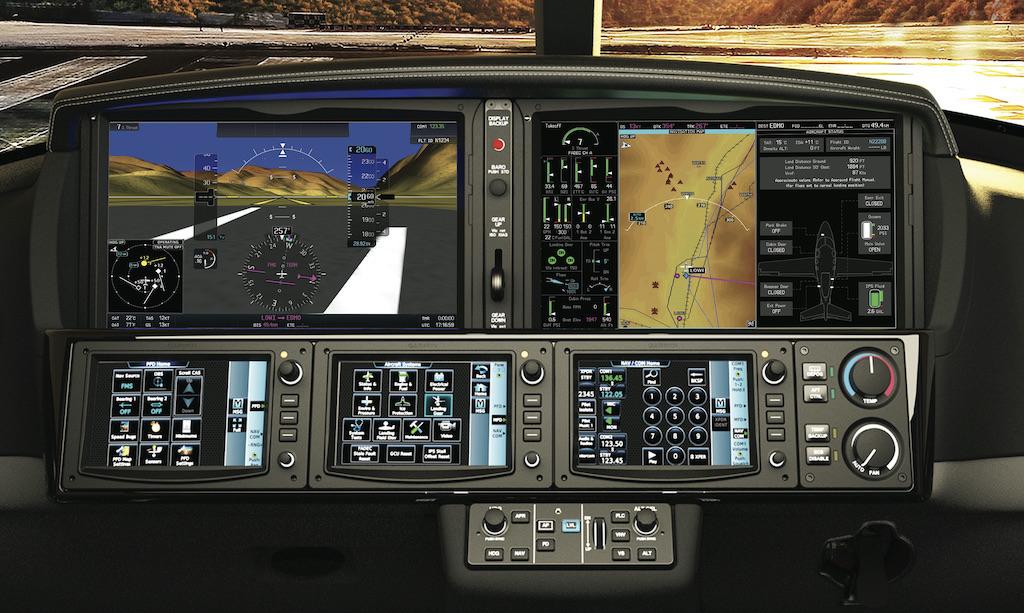
Pilots value the Vision Jet for reasons including its ease of operation, reasonable operating costs, easy cabin access from the cockpit, advanced avionics and the added safety layers of Safe Return and CAPS, said Bergwall and Wellik.
The jet’s Garmin G3000-based Perspective Touch+ suite features two 14-in. color landscape-oriented displays—a primary flight display (PFD) and a multifunction display—situated above three touchscreen controllers. Many of the cockpit switches and instruments are located in the same position as in the SR22 piston single, making for an easy transition between the two aircraft, BCA test pilot James Albright observed.
“The view from the pilot’s seat is spectacular, almost like flying in a glass bubble,” Albright wrote in an August 2021 pilot report. “The PFD provides just about all the information you need plus a feature I haven’t seen before, something Garmin calls the ‘pathway’ of its synthetic vision system. The pathway provides a series of small magenta boxes starting at infinity, which grow in size as you approach, providing a tunnel visual effect of where the desired course is. While the PFD uses conventional aircraft and flight director V-bars, a flight path marker (FPM) is included. Keeping the FPM flying into those magenta boxes provides assurance you are headed in the right direction.”
Cabin Seating Variations
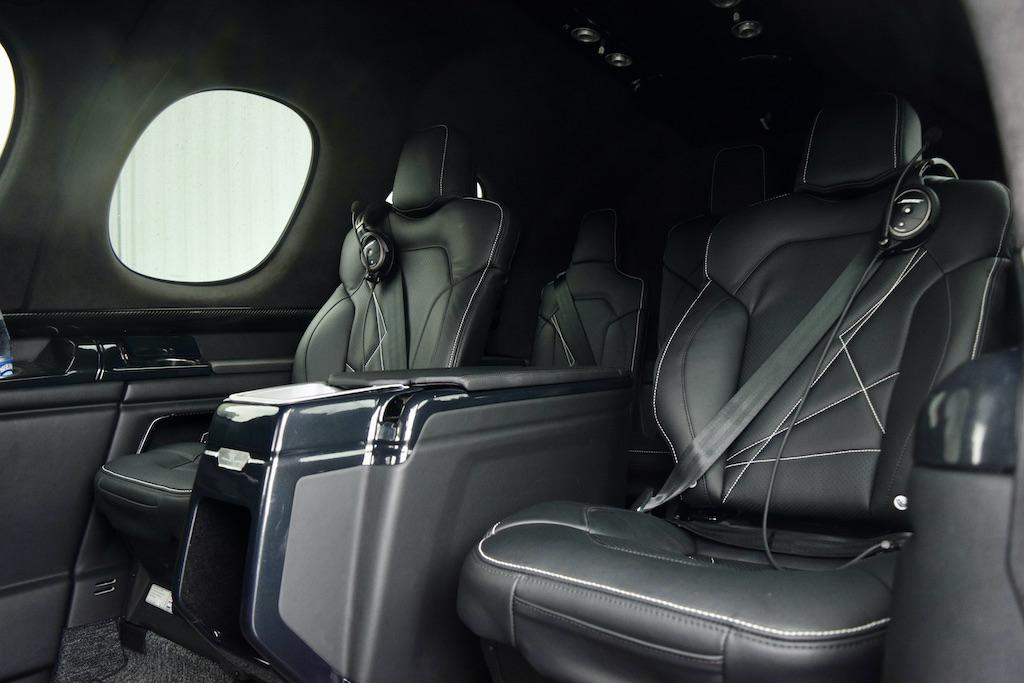
Accessed through a clamshell airstair door positioned aft of the crew seats, the Vision Jet cabin measures 5.1-ft. wide and 4.1-ft. high. Its three rows can be configured with seating for up to five adults and two children. Cirrus offers 28 possible seating configurations. Passengers appreciate the spaciousness, comfort, accessibility and panoramic windows of the cabin, as well as knowing they can activate Safe Return at the press of a ceiling-mounted button to safely land the jet in the event the pilot becomes incapacitated, Cirrus executives said.
Jet charter company Verijet, based in Opa-Locka Florida, operated 15 Vision Jets at the end of 2021 and has plans to expand its fleet to 150 of the type. “The SF50 Vision Jet was designed with luxury and comfort as a priority,” the company says. “The carbon-fiber fuselage affords a cabin that is spacious with unexpected head and shoulder room. It is also filled with light from the panoramic windows. Cabin air is constantly refreshed, filtered and moderated by a climate control system. The interior upholstery and seating are handcrafted, plush leather perfection.”
Cirrus Aircraft offers an exclusive warranty program to Vision Jet owners called Jetstream that includes normal wear replacement, recurrent training and direct support. Through Jetstream, owners should expect direct operating costs, including fuel and maintenance, of between $800 and $900 an hour.
Basic Vision Jet maintenance intervals include data downloads and short inspections at 100 hr. and medium-size engine inspections at 300 hr., Cirrus Aircraft executives said in response to BCA’s inquiry. Williams International offers TAP Blue, an engine maintenance program that covers foreign object damage, corrosion, optional service bulletins and other services.
BCA welcomes comment and insight from aircraft dealers and brokers for its monthly 20/Twenty pre-owned aircraft market feature. The focus aircraft for August 2022 is the HondaJet Elite. To participate, contact [email protected].






